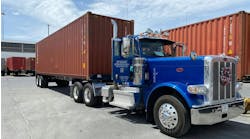Replacement over repair on the rise for medium-, heavy-duty components
There is a trend toward replacing a component with a new, OEM remanufactured, or locally rebuilt replacement part, rather than bench repairing the component. And when bench repairs are done, the trend is toward using repair kits over individual parts.
For the most part, the decrease in the use of bench repair can be attributed to the increase in equipment utilization rates we have seen over the past five years and the rise in costs associated with doing major repairs in-house. As a result, opportunity costs related to downtime are rising, which means that from a cost containment perspective, reducing downtime has become even more important for many fleets than trying to save money on parts. This is particularly true for heavy-duty vehicles in linehaul operations.
The purchase of used components has stayed at about 4-5% of medium- and heavy-duty vehicles over the past five years. These are generally older vehicles in low-use operations, a segment of the population that should remain relatively stable.
While bench repair was previously in a range of 30-40%, it has fallen to the 10-15% range (see manual transmissions example in Fig. 1 and 2). This segment should stabilize at roughly 10% over the next five years.
The market shares for new, reman, and rebuilt components have shifted somewhat relative to each other over the past five years, but as a group they have benefited from the steady reduction in bench repairs using parts. In 1997 they accounted for approximately 80-85% of the market, up from 50-60% in 1993.
Factors such as the price of the component, typical replacement cycle, and the skill/time required to complete the repair affect the sales pattern for individual components. In general, however, the dollar amount at retail (sales) will be higher overall because the 'labor' dollars are being shifted from the shop to the manufacturing, remanufacturing, or rebuilding source.
If necessary, shops can use less-skilled mechanics because swapping one transmission for another, for example, is easier than removing, overhauling, and reinstalling it. In addition, fleets don't have to pay the benefits or overtime that would have been part of the 'labor dollars' for the bench repair portion of the job.
The Aftermarket Monitor divides components into 15 major groups and sends out more than 4,000 questionnaires each month to commercial vehicle operators. Parts categories covered are diesel engines; gas engines; electrical and lights; air brakes, wheel seals and bearings; hydraulic brakes, wheel seals and bearings; manual transmissions and clutches; automatic transmissions; drive axles, universal joints and drivelines, and PTO drives; exhaust components and engine cooling systems; front suspension and shock absorbers; rear suspensions and springs; engine oil and filtration systems; tires; electronics, wheels and fifth wheels; seats, mirrors, tanks, and leak detection equipment; and paint.
For more information on FLEET OWNER's Aftermarket Monitor, call Tom Duncan at 914-287-6710.
The following individuals recently received prizes for participating in last month's survey: Noel Livengood, Otto Brick & Tile Works Inc., Springs, Pa.; David Blake, George Reed Inc., Sonora, Calif.; and Michael McCann, Vestal Central School, Vestal, N.Y.
[Editor's Note: To view charts mentioned in story, please refer to charts on page 122 of FLEET OWNER's May 1998 issue.]


